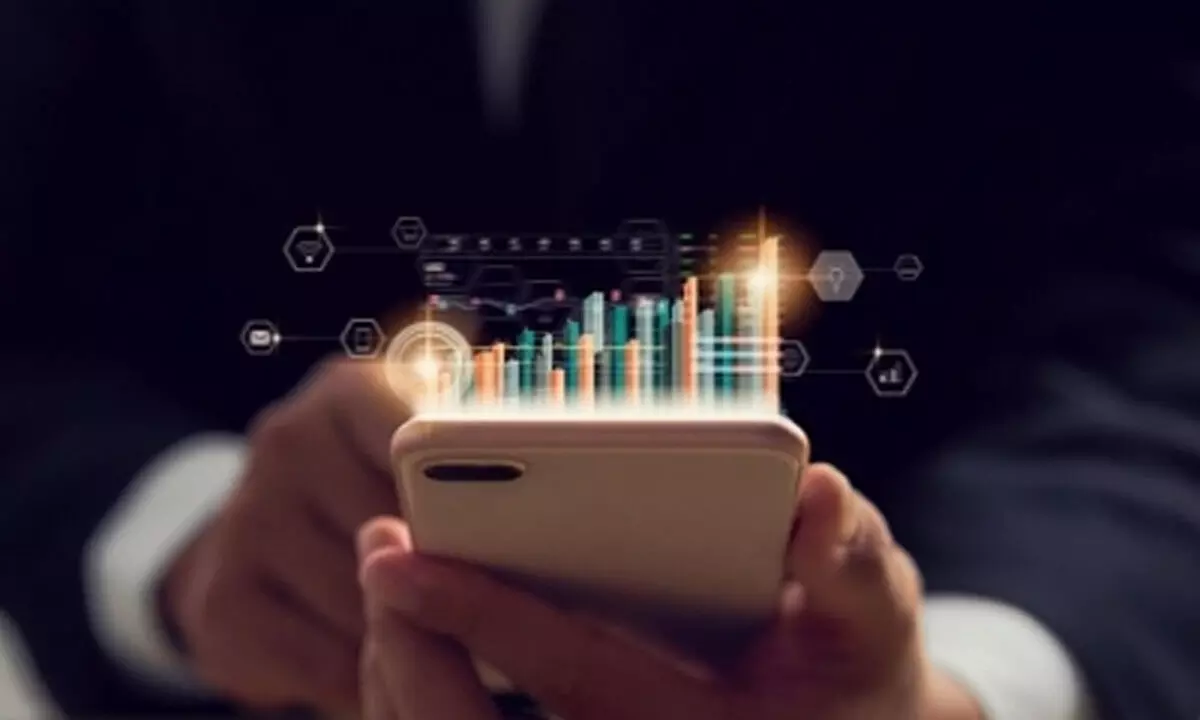Live
- Hyderabad soaks in vibrant Yuletide spirit
- Heavy rains forecast at isolated places in AP
- Paediatricians raise alarm over spread of HFMD in Prakasam
- Cong demands Shah’s expulsion
- One-man panel to visit three districts from Dec 27
- Monitor investments, creation of jobs: CS
- Hyderabad: City-based Karaoke group feted by Rafi family
- Rachakonda sees uptick in murders, kidnappings; overall crime rate rises
- Hyderabad: Police bust drug racket, three land behind bars
- HC extends Sengar’s interim bail till Jan 20
Just In

India to become 50% non-cash economy in consumption in 3 years
India is expected to become a 50 per cent non-cash economy in consumption in the next three years, with person-to-merchant digital transactions reaching over $1.5 trillion by FY26, a report showed on Thursday.
New Delhi: India is expected to become a 50 per cent non-cash economy in consumption in the next three years, with person-to-merchant digital transactions reaching over $1.5 trillion by FY26, a report showed on Thursday.
India's household consumption is expected to reach more than $3 trillion by FY26, largely propelled by the upper-middle and high-income segments, with UPI payments likely making up a significant portion at around $1 trillion person-to-merchant (P2M) payments, according to the report from Bain & Company.
"With the current technical and financial momentum, India is expected to become a nearly 50 per cent non-cash economy in consumption in the next three years with approximately 350-400 million digital consumers," said Saurabh Trehan, Partner and Leader of the Financial Services (FS) practice, Bain & Company.
This growth could be further propelled to 60-75 per cent in case of continued government incentives and higher traction for UPI 2.0, 123 Lite, credit on UPI, Central Bank Digital Currency (CBDC), he added.
UPI has seen an exponential growth in recent years, with its total annualised transaction value reaching up to $1.7 trillion and its P2M transactions climbing to $380 billion (in FY23), almost twice the amount of credit cards.
This growth is expected to continue at a CAGR of 40-50 per cent, the fastest among payment modes, on the back of rapid merchant acceptance and adoption given zero/low merchant discount rate (MDR), increasing internet penetration, and wider awareness of digital payment methods.
Additionally, new innovations like credit on UPI, UPI 123 Pay, UPI Lite, and UPI coin vending machines are expected to further accelerate the adoption, the report mentioned.
Embedded finance has gained huge traction with credit card and Buy Now Pay Later (BNPL) transactions currently accounting for nearly 8 per cent of total consumption. By FY26, this is expected to grow to around 12-13 per cent of consumption.
Credit card spends in India are expected to grow approximately 2.5 times to reach around $270-$280 billion by FY26 from its current $100-$110 billion in FY22, said the report.
It is expected that the number of credit cards in circulation will reach approximately 135-140 million by FY26.A
"CBDC, a non-interest-bearing digital currency, could be a game-changer for low ticket transactions, especially in semi-urban and rural areas with limited internet connectivity," the report mentioned.
However, overcoming challenges such as KYC verification, offline access, security, cost, and compliance will play an important role in adoption, it added.
"Early signs, including the introduction of MDR on UPI through PPI, indicate that National Payments Corporation of India (NPCI) wants more monetisation avenues to promote innovation from payment service providers (PSPs), yet also desires to be careful not to hinder the progress of UPI growth", said Rakesh Pozhath, Partner and leading member of the FS practice, Bain & Company.

© 2024 Hyderabad Media House Limited/The Hans India. All rights reserved. Powered by hocalwire.com







